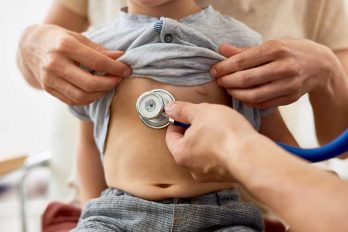The first year of a child’s existence is characterized by astounding growth and developmental milestones. Babies begin a journey of discovery, learning, and physical development the instant they are born. As parents and caregivers, understanding the various phases of development during this critical period enables us to provide optimal support and foster a nurturing environment for our young children. This blog will provide a comprehensive guide to the extraordinary journey of development from birth to one year, including physical, cognitive, emotional, and social landmarks.
Physical Development
During the first year of life, infants undergo remarkable physical changes. From tiny, helpless infants, they progressively gain body control and develop new motor skills. During the first few months, infants learn to raise their heads, roll over, and eventually sit up without assistance. Around six months, most infants begin creeping or scooting to explore their environment. Typically, infants take their first steps as they approach their first birthday, transitioning from creeping to walking.
Cognitive Development
Infants’ cognitive development is an enthralling process to observe. Babies are continually absorbing information about their surroundings from birth. They begin to identify familiar features, imitate sounds, and react to familiar voices. As time passes, they develop object permanence, or the comprehension that objects continue to exist even when they are not visible. In addition, they develop an understanding of cause-and-effect relationships and engage in basic problem-solving activities. By their first birthday, the majority of infants can comprehend simple words, follow basic instructions, and speak a few words.
Emotional Development
Babies are born with the capacity to establish emotional bonds with their primary caregivers. They develop a sense of trust and attachment in the first year, primarily with their parents or primary caregivers. They feel secure through consistent and compassionate interactions. Smiles, coos, and babble are early indicators of their emotional bond. Babies develop a variety of emotions, including happiness, frustration, and separation anxiety, as they mature. It is essential to provide a secure and nurturing environment that promotes their emotional health.
Social Development
Social development is the interaction and communication of infants with others. Early in life, infants use eye contact, facial expressions, and gestures to articulate their needs and emotions. They take pleasure in social interactions and begin to favor familiar faces. Around six months, infants become more interactive, engaging in turn-taking activities and expressing happiness through laughter and delighted shrieks. As infants near their first birthday, they develop an interest in playing with other children and begin to appreciate simple social activities.
Supporting Developmental
Milestones As caregivers, we can support our infants’ development during this crucial period in a variety of ways. It is essential to provide a safe and stimulating environment. Provide age-appropriate tools and activities that promote exploration, sensory experiences, and the development of fine motor skills. Respond promptly to your infant’s signals by engaging in interactive play, reading, and conversing with them. Develop a routine that provides security and predictability. Remember that every child develops at their own tempo, so celebrate their unique milestones and provide unwavering support throughout their development.
The first year of a child’s existence is a remarkable and formative period of development. By understanding the physical, cognitive, emotional, and social milestones that babies typically attain during this period, we can better support their development and foster an environment conducive to their flourishing. As parents and caregivers, we have the privilege of witnessing the awe-inspiring progression of their growth. Cherish each milestone, accept the challenges, and revel in the pleasure of seeing your child reach their full potential.




